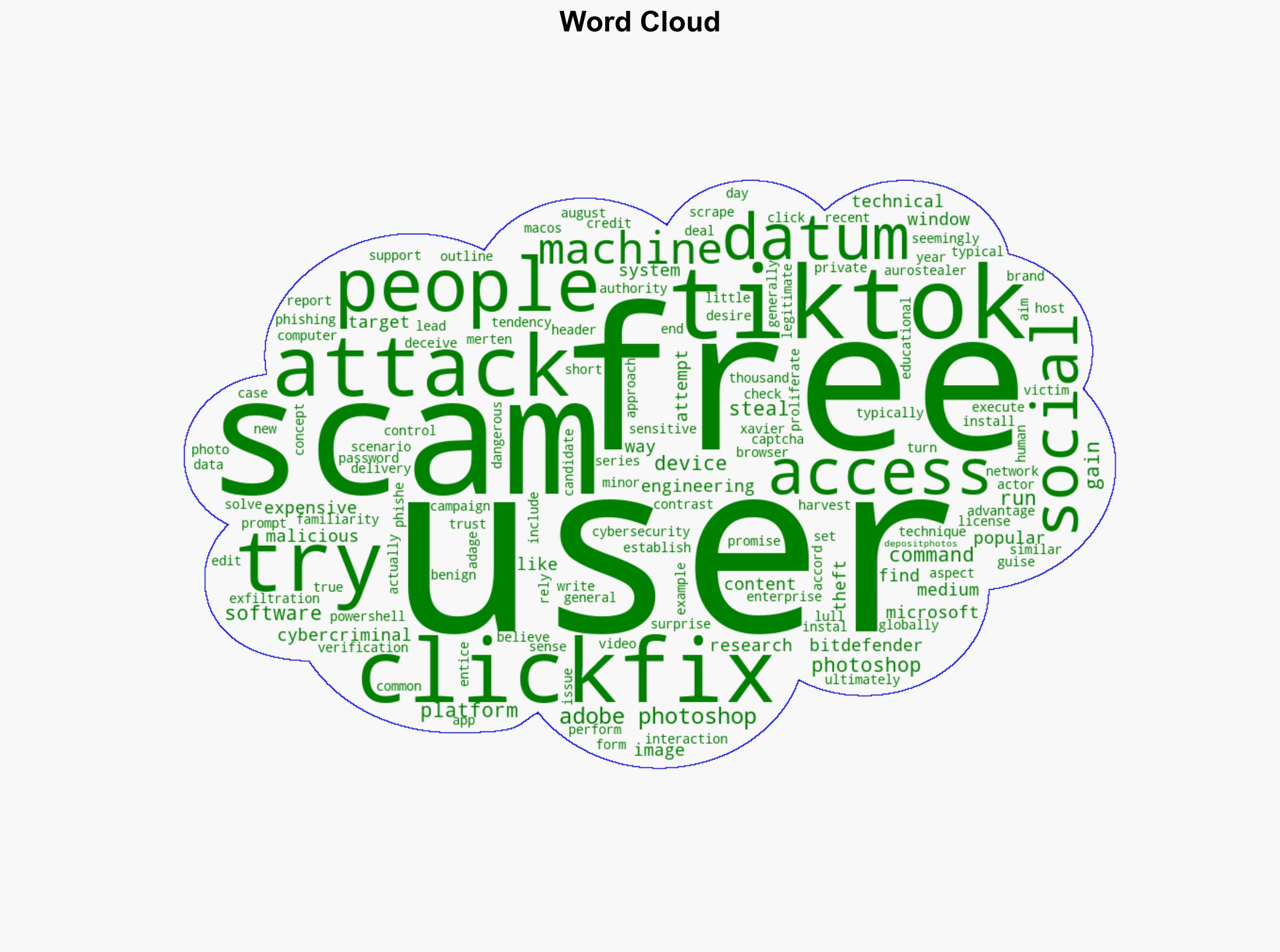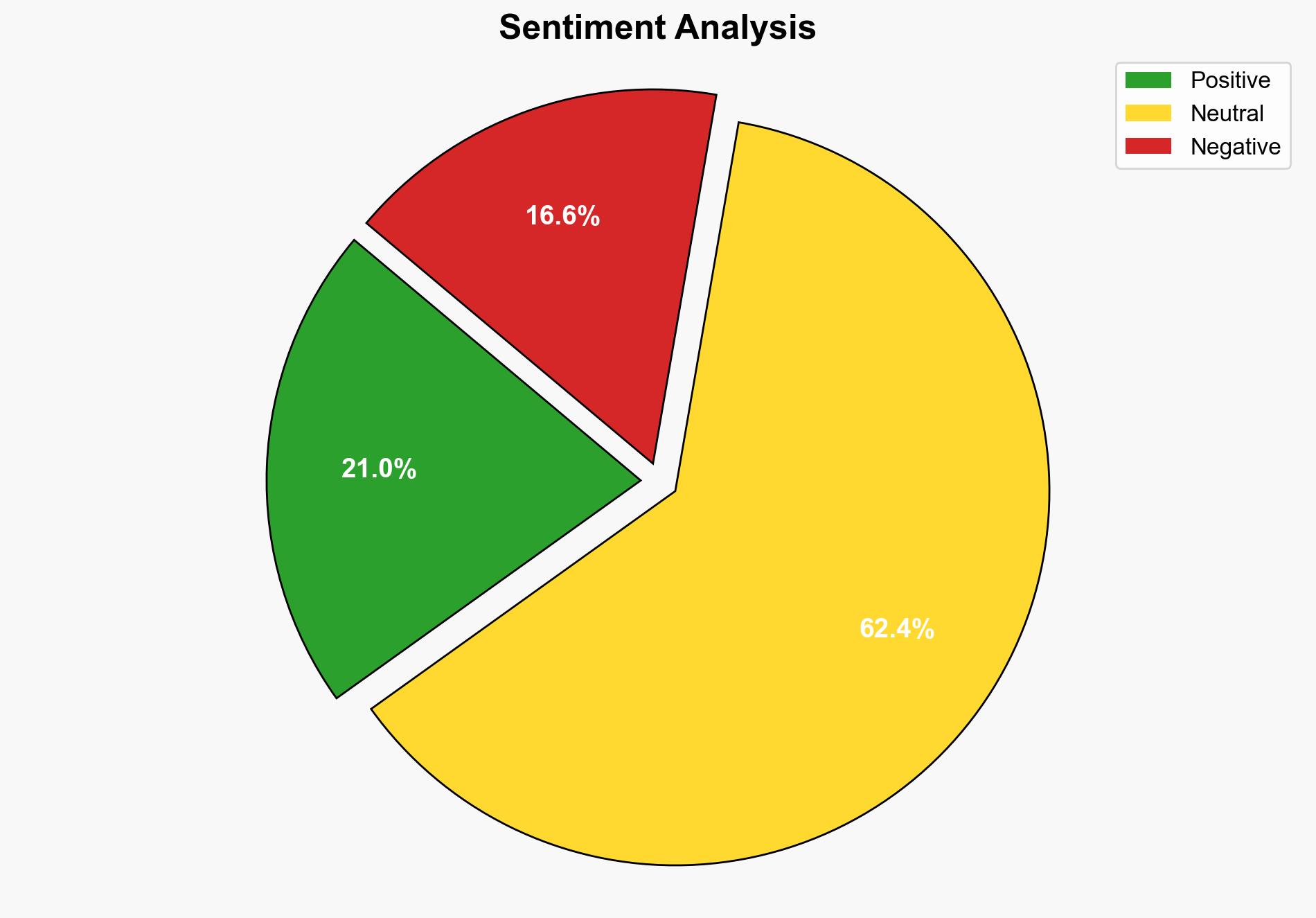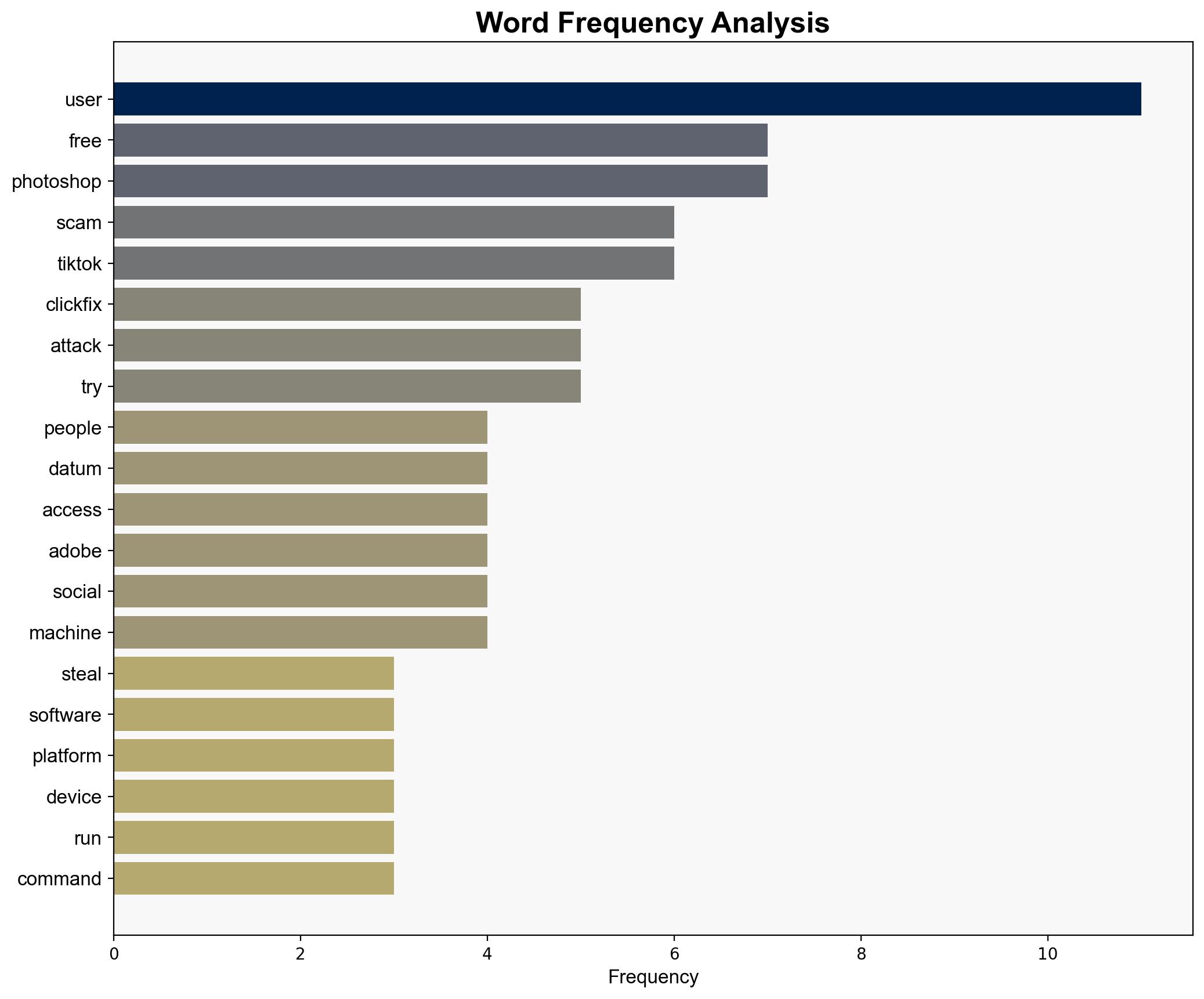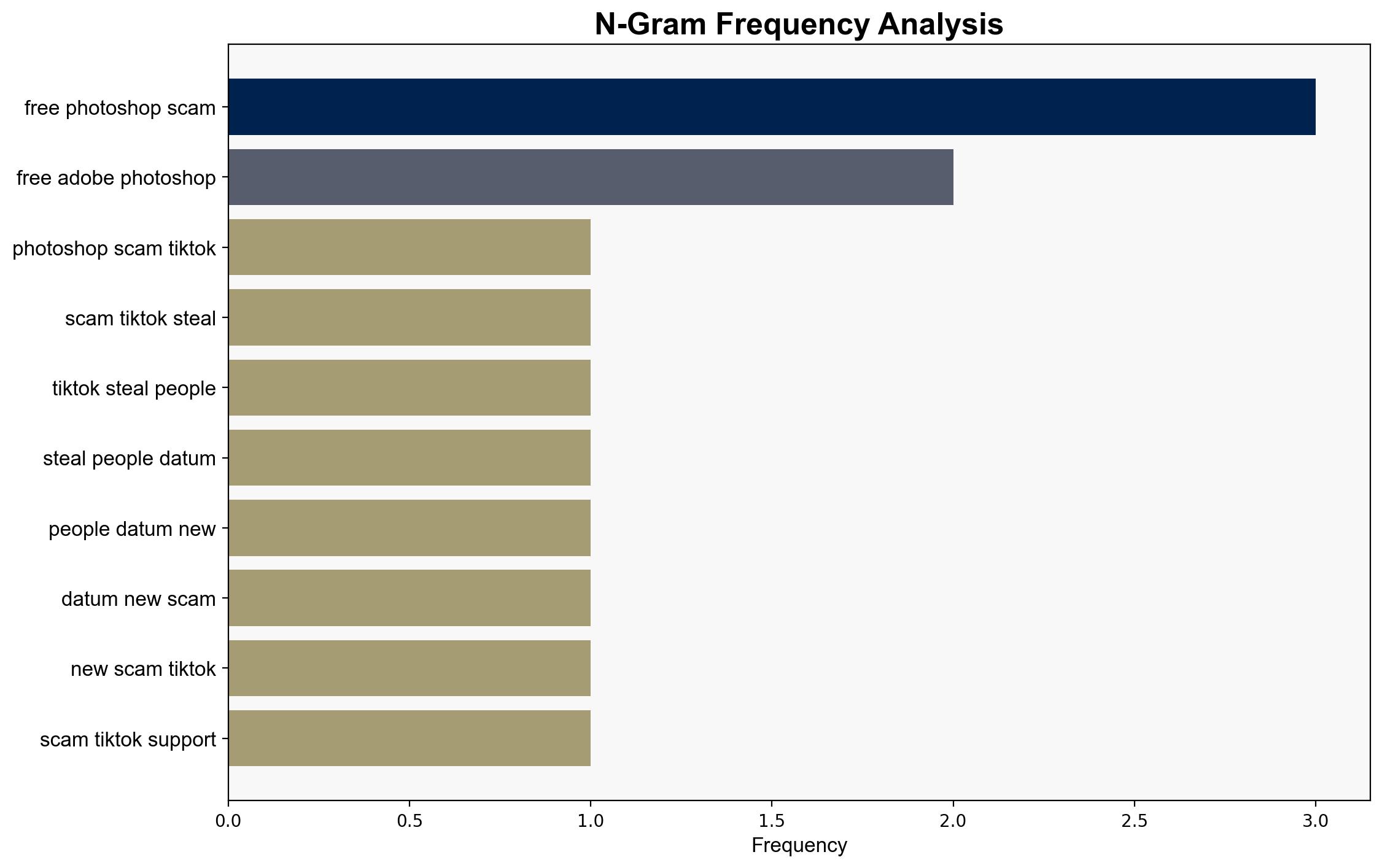A Free Photoshop Scam on TikTok is Stealing Peoples Data – PetaPixel
Published on: 2025-10-22
Intelligence Report: A Free Photoshop Scam on TikTok is Stealing Peoples Data – PetaPixel
1. BLUF (Bottom Line Up Front)
The most supported hypothesis is that the TikTok scam is a sophisticated social engineering attack designed to exploit users’ desire for free software, leading to data theft. Confidence level is moderate due to the reliance on secondary sources and the evolving nature of cyber threats. Recommended action includes increasing public awareness and enhancing cybersecurity measures on social media platforms.
2. Competing Hypotheses
Hypothesis 1: The TikTok Photoshop scam is primarily a social engineering attack leveraging the platform’s reach to deceive users into installing malware for data theft. This hypothesis is supported by the detailed description of the ClickFix attack technique and the use of familiar software to lure victims.
Hypothesis 2: The scam is part of a broader campaign by cybercriminals to exploit social media platforms for various malicious activities, including data theft, financial fraud, and identity theft. This hypothesis considers the broader context of cyber threats on social media and the potential for multi-vector attacks.
3. Key Assumptions and Red Flags
– Assumption: Users are primarily motivated by the promise of free software, making them susceptible to scams.
– Red Flag: Lack of direct evidence linking specific cybercriminal groups to the scam.
– Potential Bias: Over-reliance on Bitdefender’s report without corroborating sources.
– Missing Data: Detailed technical analysis of the malware involved and its full capabilities.
4. Implications and Strategic Risks
The proliferation of such scams on platforms like TikTok poses significant cybersecurity risks, potentially leading to widespread data breaches and financial losses. The use of familiar software as bait highlights the psychological dimension of cyber threats. If unaddressed, these tactics could escalate, undermining trust in digital platforms and causing economic disruption.
5. Recommendations and Outlook
- Enhance public awareness campaigns about the risks of downloading software from unverified sources.
- Encourage social media platforms to implement stricter content moderation and verification processes.
- Best-case scenario: Increased vigilance and improved cybersecurity measures reduce the prevalence of such scams.
- Worst-case scenario: Cybercriminals adapt and escalate tactics, leading to more sophisticated attacks.
- Most likely scenario: Continued occurrence of similar scams with periodic disruptions and data breaches.
6. Key Individuals and Entities
– Xavier Merten (Cybersecurity Researcher)
– Bitdefender (Cybersecurity Firm)
– Microsoft (Research on ClickFix attacks)
7. Thematic Tags
national security threats, cybersecurity, social media exploitation, data theft





